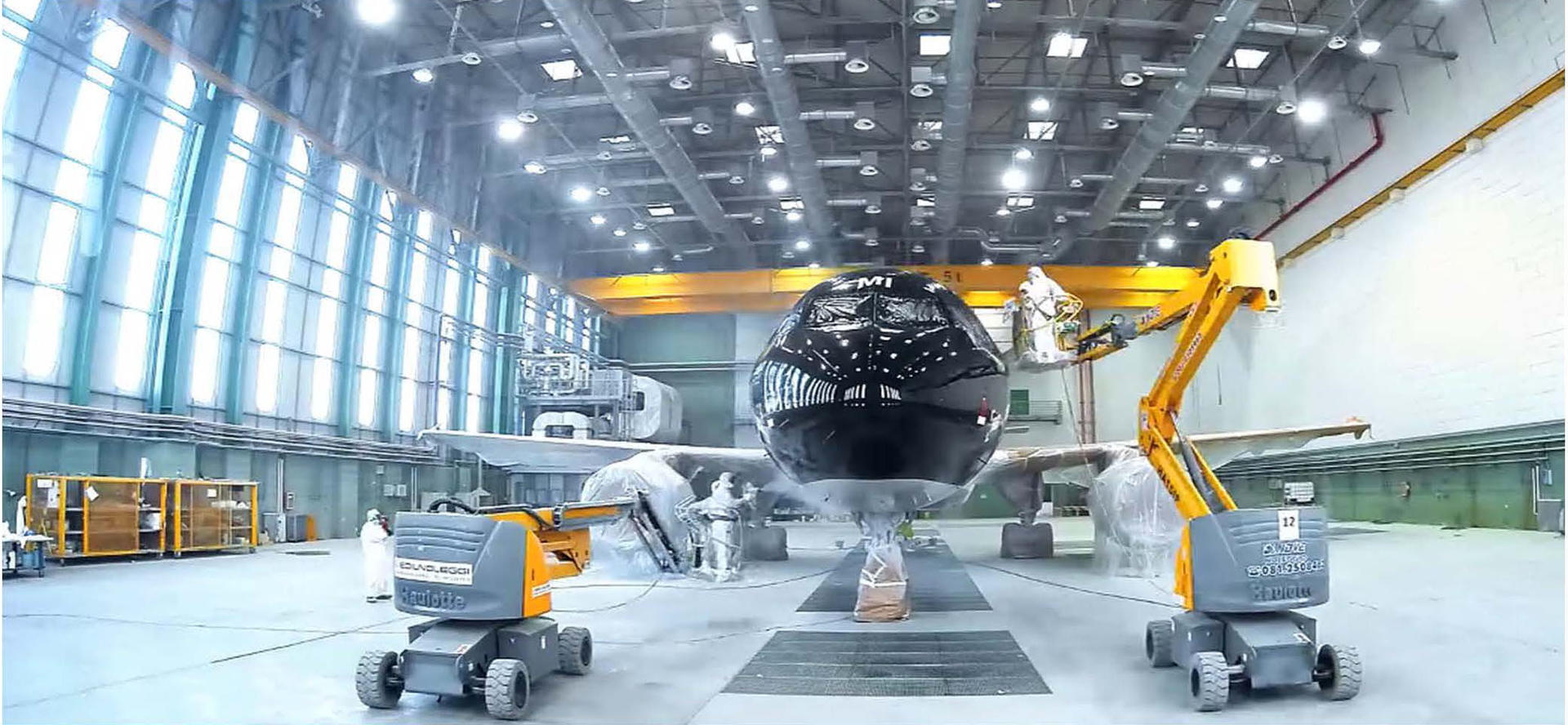Areas with risk of explosion: aircraft maintenance in Hangars
1. Introduction Very often we think that the equipment designed for use in potentially explosive environments is exclusively intended to...
1. Introduction
Very often we think that the equipment designed for use in potentially explosive environments is exclusively intended to be installed in refineries and crude exploration or extraction platforms. In reality, analyzing in depth how many and which application sectors can be, we discover many other plant situations that need to safeguard people and things through the use of materials and equipment suitable for the specific purpose. One of these is the hangars in which aircraft are parked for routine and extraordinary maintenance activities.
2. The aircraft
In the world air transport market, there are several transport companies that use technologically advanced passenger and/or cargo handling vehicles to carry out transport with maximum comfort and the lowest cost.
However, due to the high technological quality, the aircraft require continuous maintenance, in order to guarantee, as a constant, the maximum safety for people in the expected life time of the aircraft.
3. The wear of equipment and materials
There are very stringent regulations that require ordinary and extraordinary maintenance to be based on the number of flight hours for each type of aircraft, whether it is for passenger or for materials transport.
According to these regulations, aircraft and all means of air transport must comply with strict rules on the verification of wear and tear on materials that are severely stressed and therefore subject to greater stress than equipment and materials with static use.
4. Ordinary and extraordinary maintenance
Ordinary maintenance refers to all those activities that are carried out every day for the maintenance of the aircraft such as the internal and external cleaning, the verification of the functionality and the services and the working control of on-board equipment.
Extraordinary maintenance refers to all those activities that must be performed to comply with the mandatory safety regulations, such as the control of the wear of the parts subject to stress and of the functionality of all materials and equipment.
5. The facilities dedicated to maintenance (Hangar)
Considering the large dimensions of these aircraft, special maintenance facilities (Hangars) are installed for their maintenance, which are located within the airport areas, but in separate zones. In the hangars all the maintenance operations are carried out such as the disassembly and reassembly of all the sensitive parts that will then be transferred to the mechanical maintenance workshops, the stripping of all the external parts subject to wear and the subsequent repainting, after having carried out all the integrity checks on the structure.
6. Types of external coatings of the aircraft
Given the nature of the aircraft casing and considering that they will be exposed to different types of abrasion, the coatings are distinguished according to the different resistance characteristics.

7. The stages of paint stripping and repainting
Before proceeding with paint stripping, all the unpainted parts are protected by masking. The stripping activity is performed using solvents suitable for the type of paint present and adopting all the necessary precautions in order to safeguard the safety of the operators who are exposed to volumes of gas generated by the solvents used.

The structure of the aircraft is returned to its initial state with peraluman or avional sheets totally free of paint.

After having removed all the protective masking, the aircraft is repainted with the colors of the specific flag company.

8. The electrical equipment that must be used in the maintenance hangars
The hangars must be considered areas with risk of explosion for the use and/or storage of chemical solvents and paints necessary for maintenance activities, for the formation of gas clouds produced during the use of these substances and dust clouds generated in the paint removal phases which, in some cases, cannot be removed with solvents but with mechanical means that generate dust.
It is therefore necessary to proceed with the classification of environments with risk of explosion taking into account the chemicals used, the emission of flammable substances and combustible dust in the atmosphere and the environmental ventilation present. From the comparative analysis of these elements, considered under many aspects, it will be possible to proceed to the evaluation of the types of dangerous zones.
Evaluation of ventilation is of fundamental importance, as the healthiness and cleanliness of the rooms is essential. Moreover, in the presence of adequate and guaranteed ventilation, a downgrading of the zones is allowed, which can be absolutely favorable for the purposes of the plants.
Once the types of dangerous areas have been identified, it is therefore possible to determine and choose the “Ex” construction types of electrical systems and equipment:
- Lighting equipment for distributed lighting
- Lighting equipment for concentrated lighting (floodlights)
- Sockets and plugs suitable for connection and disconnection in a hazardous area
- Light distribution and driving force switchboards
- Earthing systems with equipotential verification and consent to switch on electrical equipment such as extraction pumps
- Ventilation and air extraction systems
- Equipment connection accessories